Between February 1810 and August 1812, San Fernando and Cádiz was the only part of Spain not occupied by the French during the Peninsular War
By Nick Nutter | Updated 15 Mar 2022 | Cádiz | Villages |
Login to add to YOUR Favourites or Read Later
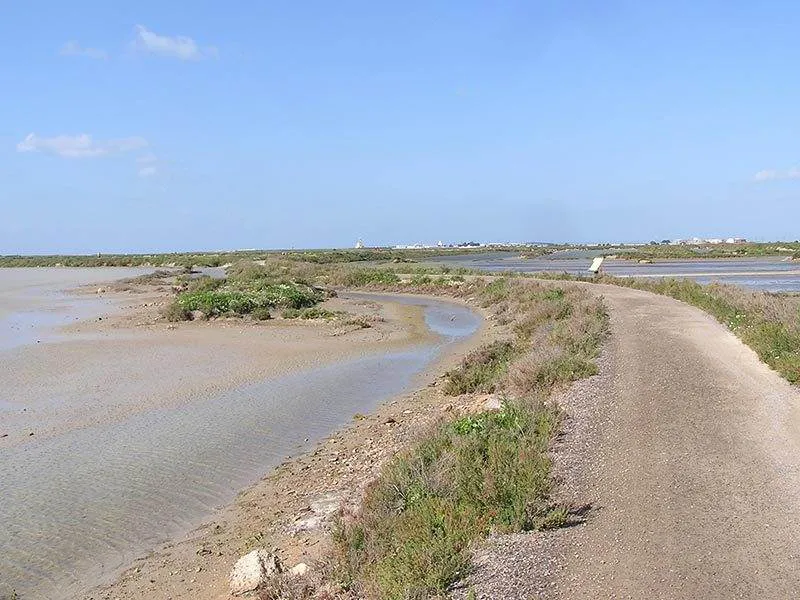
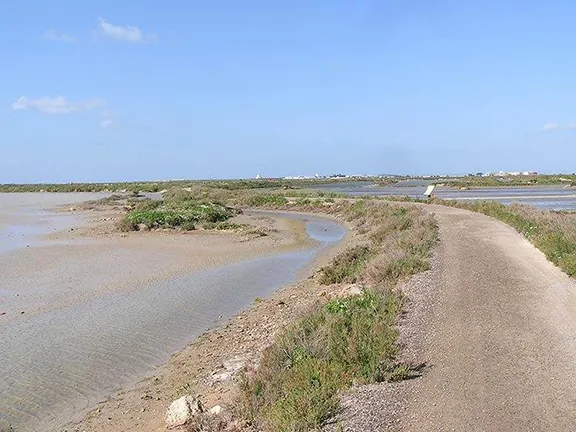
The Bahia de Cadiz
Eight kilometres south of Cádiz along a narrow causeway linking the island of Cádiz with mainland Spain is San Fernando. When travelling to Cádiz by road or rail you have to pass through this equally historic but not anywhere near as well promoted town.
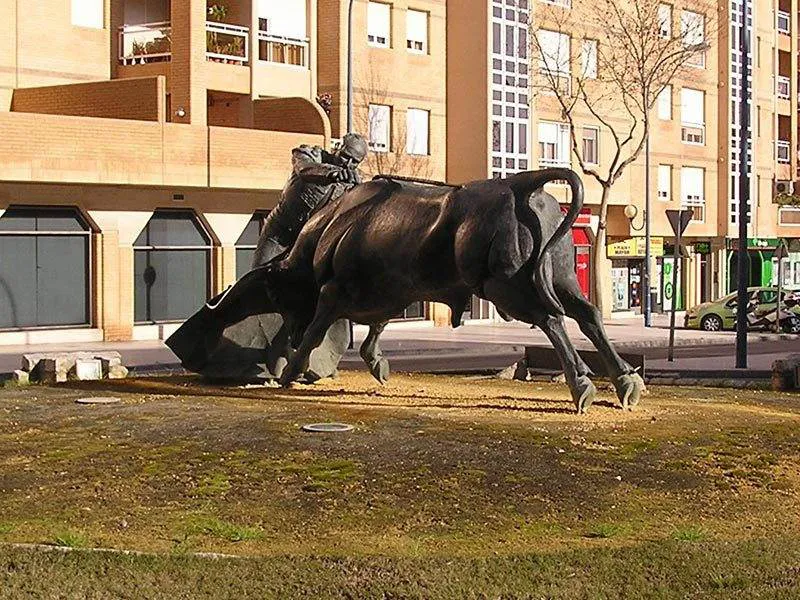
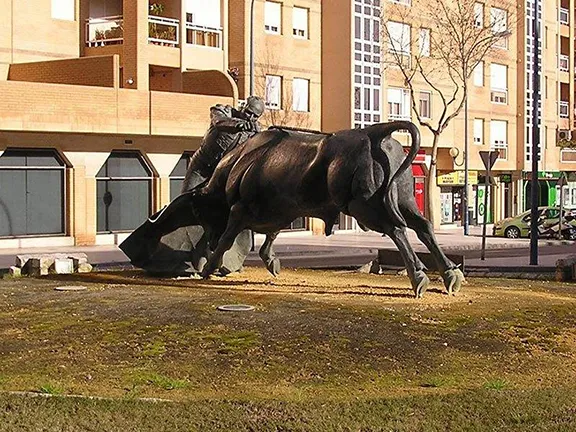
The statue of Rafael Oriega
San Fernando sits on an island locally known as the Isla de Leon and from that island, until recent years, there was only one narrow bridge, the Zuazo dating back to Roman times, linking the island to the mainland. San Fernando then has always been in a strategic position, guarding the only land approach to Cádiz. Between February 1810 and August 1812, San Fernando and Cádiz was the only part of Spain not occupied by the French during the Peninsular War (also known as the Spanish War of Independence) and the Zuazo bridge became the hottest property in Spain. It was defended throughout that period by Capitan de Navio Don Diego de Alvear y Ponce de Leon, Diego to his friends, commanding a brigade of mixed artillery and infantry from the Spanish Naval Marine.
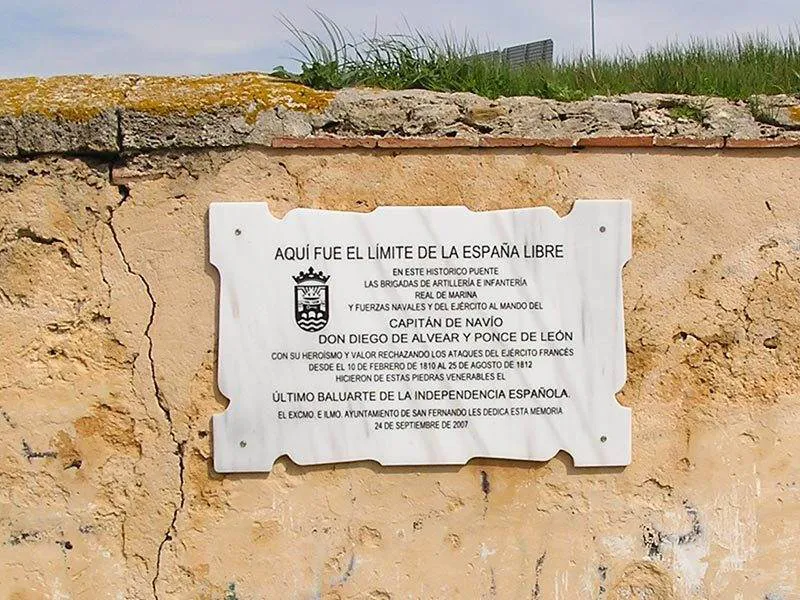
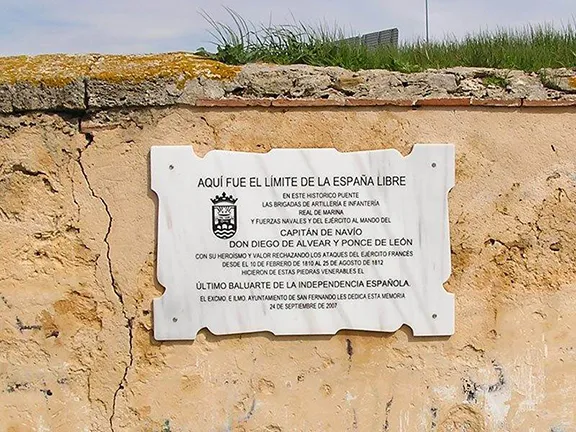
The Plaque on the Bridge
A plaque belatedly erected in 2007 commemorates the feat and proclaims the small battery at the northern end of the bridge to be ‘[the] Ultimo Baluarte de la Independencia Espanola’, the last bastion of independence in Spain.
This defensibility was recognised by the Phoenicians who, between 850 BC and 600 BC built fine villas, salt factories and potteries as well as the fabled Temple of Melkart between the southern extremities of the Isla de Leon, Sancti Petri, and the northern spit, now called Camposoto. Beyond that point, in those days, the sand spit now offering dry purchase to the city of Cádiz, was covered by the sea. The Municipal Historical Museum has a good assortment of artefacts from this period.
The town is also favourably placed at the southern end of the Bay of Cádiz. Since ancient times the bay has provided refuge from the weather for ships, although not necessarily from the predations of man. In 1586 Francis Drake burnt the Spanish fleet trapped in its own haven in an event recalled as the singeing of the King of Spain’s beard. The Spanish similarly found the French fleet trapped in the bay at the outbreak of the Spanish War of Succession in 1810 and promptly destroyed it. By then San Fernando was firmly established as the naval headquarters of the Spanish Fleet, as it is today. The Naval Museum is well worth a visit with documents portolans and charts dating back to before the discovery of America. Attached to the museum is a grand 18th century building, the Pantheon. The whole building is a memorial to the casualties suffered in the various fleet actions over the centuries and is consequently a historical record of the fleet. The guide, who speaks a little English, is well aware of the poor record of victories when Spanish ships were in battle with the English but deals with any potential embarrassment with an incredible sense of humour. Contrary to all contemporary accounts he credits the death of Nelson to a shot fired by a Spanish marksman.
His opinion of the sovereignty of the Falkland Islands also conflicts with the generally accepted view and illustrates how historical accounts of the same events can vary between countries. Just for the record Spain ruled the Isla Malvinas from Buenos Aires until 1811 when they withdrew from the islands due to pressure to allow their South American colonies to become independent. They left behind a plaque claiming continuing sovereignty that they maintain takes precedence over a similar plaque erected in 1776 proclaiming continuing British sovereignty and various later Argentinean assertions.
San Fernando is not short of other links to the sea and Spain’s once prominent role as the rulers of an Empire. Founded in 1753, the Royal Institute and Observatory is headquartered in the town and is the centre for official Spanish timekeeping. A battery of atomic clocks, installed in 1973, maintain timekeeping in accordance with the Coordinated Universal Time Scale. The observatory is, additionally, a seismological station and the most important geomagnetic observatory in Spain. Guided tours are arranged through the Tourist Office tel. 956 944 226. (Booking is essential)
For those inclined to more restful pursuits, San Fernando hosts a Botanical Gardens. Unusually in Spain the gardens concentrate on the natural and naturalised species of plants found in Andalucia and the Mediterranean regions particularly the flora of Cádiz province. You will find areas set aside for vegetation found on the Mediterranean shore, in tidal marshes, mountainous environments and the widespread pine forests. Many of the plants are carefully nurtured rare, almost extinct, species including four orchids that you would be very fortunate to find in the wild.
Nearby is the modern and new Bahia Sur, an extensive shopping centre that is a total contrast to the shops in the centre of the town that offer produce and goods from the local area. Along the pedestrianised streets of the old town you will find, in the ornately balconied and bay windowed buildings, local wines and vinegars from Jerez and Sanlucar, fruit and vegetables from nearby Chiclana and all manner of fish and crustaceans brought in by the town’s fishing boats. At the crossroads of the Atlantic and Mediterranean you will not likely find a more varied selection of seafood.
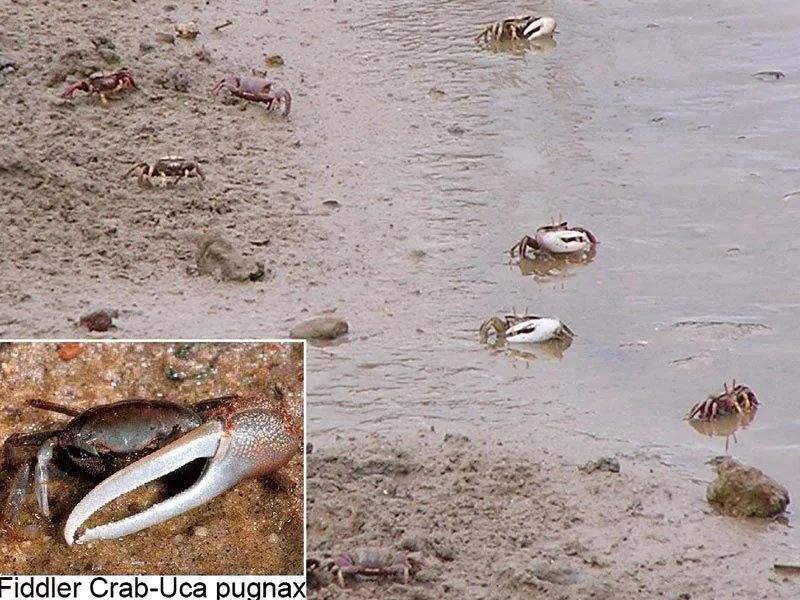
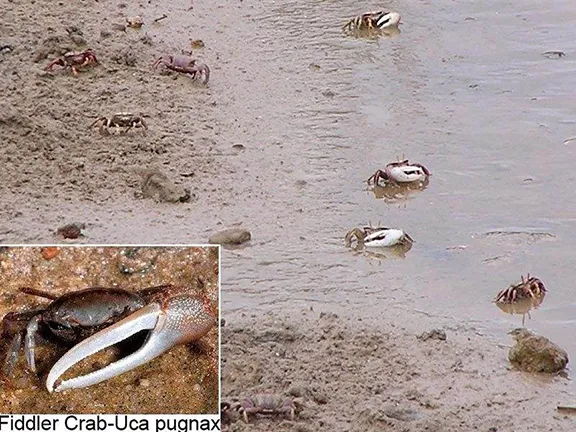
Crabs in the Bahia de Cadiz
A local delicacy is the crab claws, known as Bocas de la Isla, harvested by men in waders. They patrol the creeks in the marismas for the fiddler crabs (Uca tangeri) distinguished by having one large pale coloured claw and one normal size claw. What makes these crabs unique is their ability to re-grow the large claw if it becomes detached from the body. How this renewable food source was discovered remains a mystery. The claw is detached from the crab that is then allowed to retreat back into its hole in the mud. The claws are cooked simply in brine and sold in bars and shops. They taste delicious. What the crabs think is another matter.
For those who stay over a day or two in the town, the central area has a number of good, inexpensive restaurants that serve other local delicacies including bienmesabe, dogfish marinated in a spicy vinegar mix before being fried in a light batter, tortillitas de camerones made with the tiny, exquisitely tasting, Cádiz Bay shrimp and for the brave, papas guisadas con anguila en Amarillo, a type of stew made with eels, potatoes, onion, garlic, parsley and saffron. The town observes a late siesta and many restaurants do not re-open until 8.30pm or 9pm.
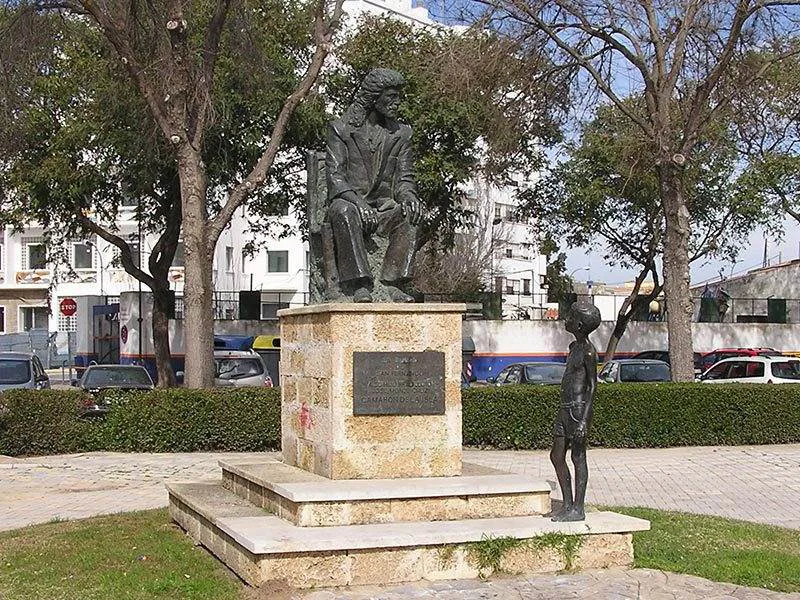
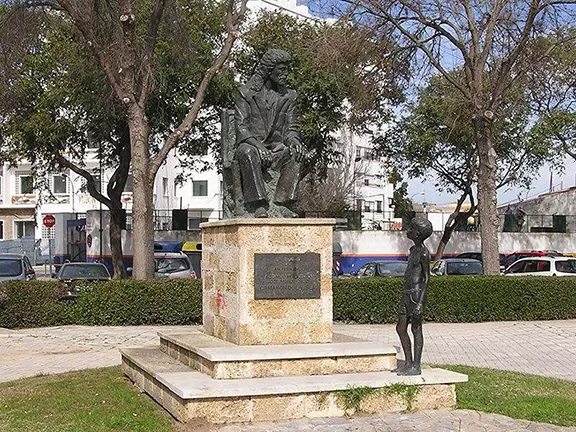
The Statue of Jose Cameron
If all that were not enough, San Fernando has a strong cultural heritage. The famous bullfighter Rafael Oriega was born here and his statue is prominent on one of the many roundabouts in town. Perhaps the most famous former resident though was José Camaron, known as Camaron de la Isla. Born in 1950 he was a well-known flamenco singer by the age of eight years old and by the age of twelve he was recognised internationally. After his death in 1992 he was buried in the town and a mausoleum was erected in his memory. You will find his statue near the Zuazo bridge.
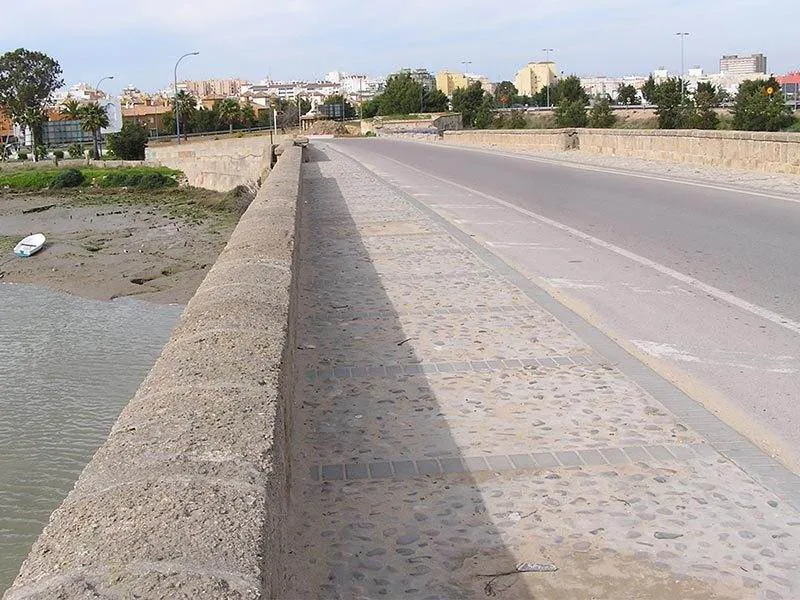
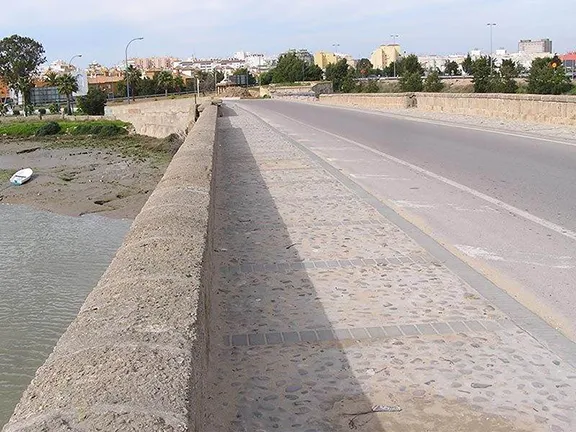
San Fernando Bridge
Geographically San Fernando is fascinating. From the town itself there are a number of walks into the marismas that surrounds Cádiz Bay and south along the Atlantic coast as far as Sancti Petri. The whole area was, at one time, channelled for the production of salt that is still, after over two and a half thousand years an important part of the economy here. Most parts are now a haven for resident waders and the migratory species that stop over on their way to and from colder climes. You will see flamingos, oystercatchers, stilts, red and green shanks, the grey phalarope, spoonbills, white wagtails and a host of other species feasting in the rich shallow waters.
San Fernando has something for everyone and is still one of the few places that is not on the tourist map. You can enjoy the ambience of a real Spanish town with plenty of activities to choose from or just relax. As a centre from which to explore the region you will be well placed. The train will take you in a few minutes to Cádiz itself and in an hour or so to Seville. If you prefer to drive the autoroute is only a few minutes from the town centre taking you into the Chiclana, Conil, Barbate areas in under 30 minutes.